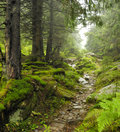|
Btw, Brent is back to about $53-54 since the Saudis agreed to cut output and I expect OPEC is going to try to continue to elevate it. I honestly don't think we are going to be able to walk away from oil for a while, not that it is a good thing, but the issue is that there is still too much fundamental demand to cause it to permanently stall. It is also a real question if we even reached peak demand yet because there is so much depent up urbanization in the global south. Oil isn't going to kill itself.
|
|
|
|

|
| # ? Jun 8, 2024 00:51 |
|
We're using oil for a SHITTON of stuff that isn't just "burning it for electricity/heat/propulsion", so it's not going away anytime soon even if we do our level best to move to electric everything 
|
|
|
|
Ardennes posted:Btw, Brent is back to about $53-54 since the Saudis agreed to cut output and I expect OPEC is going to try to continue to elevate it. I honestly don't think we are going to be able to walk away from oil for a while, not that it is a good thing, but the issue is that there is still too much fundamental demand to cause it to permanently stall. It is also a real question if we even reached peak demand yet because there is so much depent up urbanization in the global south. Yeah we're not even remotely close to being able to eulogize the oil industry. There's absolutely no credible political drive to move to renewables in terms of power generation, and even less of a credible push towards mass transit to curb its use in transportation. And that's not even taking into account the countries that are still industrializing across the globe. Wibla posted:We're using oil for a SHITTON of stuff that isn't just "burning it for electricity/heat/propulsion", so it's not going away anytime soon even if we do our level best to move to electric everything Yeah but the lion's share of it winds up in fuels  Still Dismal posted:It can both be true that phasing out Oil and Gas will cause real structural employment for a lot of people and that that is something that has to be dealt with, and that that soft focus profile of college kids outraged that there isn’t a Halliburton job waiting for them is ridiculous. Pretty much this. The focus on "well how are the young up and coming elites of America, the future managerial class, doing during the pandemic", along with the plethora of STDH like the uppity uber driver accosting a young up and coming petroleum engineer, is just classic NYT. e: Marxalot fucked around with this message at 18:09 on Jan 6, 2021 |
|
|
|
Elite Public University Students.  Undergrad and graduate. Engineers and accounts. Undergrad and graduate. Engineers and accounts. Not a single one profiled was in management.
|
|
|
|
This seems bad: https://www.miaminewtimes.com/news/nrc-issues-inspection-report-for-turkey-point-shutdowns-11797972 Should I be investing in Iosat pills?
|
|
|
|
net work error posted:This seems bad: Ok, so a good thing to point out here is they interview Edward Lyman of UCS, he's somewhat of a anti-nuclear nutcase. The failure that happened in 2017 was in a reundant bus in the switchgear, but the primary bus remained intact and the reactor was properly shutdown and scrammed, and no loss of cooling happened. The shutdowns and faulty startups are concerning, but it has little to do with the licensing for the reactors, more the company is being too lax. But what do you expect from for-profits operating under a lax Federal Agency chaired by anyone Trump appointed. CommieGIR fucked around with this message at 02:45 on Jan 15, 2021 |
|
|
|
net work error posted:This seems bad: No it seems like normal operation and you can always interview an anti nuclear regulator and they will say pretty much the same thing no matter what. Scrams are not scary and not indicative of anything really bad. They are indicative of safety equipment working as inteded.
|
|
|
|
About 5GW of nuclear retirements planned for 2021 Looks like nuclear's in a race with coal as to what's getting phased out in the US faster.
|
|
|
|
FreeKillB posted:About 5GW of nuclear retirements planned for 2021 Mostly to be replaced by Natural Gas, unfortunately.
|
|
|
|
Wrong! any new gas is bad, but wind and solar are way ahead of gas in buildout e: i guess I should clarify wrong on a raw capacity basis. Actual new generation in terms of energy depends on how often the new gas plants are dispatched, but even at a 25% capacity factor the renewables edge out the gas at 100%. FreeKillB fucked around with this message at 03:06 on Jan 15, 2021 |
|
|
|
FreeKillB posted:Wrong! quote:Natural gas. For 2021, planned natural gas capacity additions are reported at 6.6 GW. Combined-cycle generators account for 3.9 GW, and combustion-turbine generators account for 2.6 GW. More than 70% of these planned additions are in Texas, Ohio, and Pennsylvania. No, my point stands: We're losing 5GW of Nuclear and gaining 6.6GW of Natural Gas. So, yes, replaced by Natural Gas. Yes, the Solar and Wind increases are good, but those too are being backed by Natural Gas peaker plants. At least Votgle 3 comes online this fall.
|
|
|
|
That arithmetic is too blunt to be worthwhile without a more detailed analysis including the relevant transmission bottlenecks. Looking at the retirement map, my rough estimate is that it's wind (and some solar even) in the Midwest that's pushing out the Illinois nuclear, as opposed to the new gas, which is all the way over in OH/PA. In any case, it's misguided to use '6.6GW new gas, 5.1MW nuclear retirement' as singular proof of your statement when the new capacity includes 17.6 GW of renewables and 4.3 GW of battery capacity. Most of new generation is not replacing aging units but rather to keep up with load growth due to general economic growth. Those renewables are going to push a substantial amount of natural gas out of economic dispatch because they have no fuel cost. Most of that gas (3.9/6.6) is combined cycle rather than peaker, and peakers run relatively rarely in the current grid because they are close to if not the highest-cost resource to dispatch (outside of like diesel or petroleum units).
|
|
|
|
FreeKillB posted:In any case, it's misguided to use '6.6GW new gas, 5.1MW nuclear retirement' as singular proof of your statement when the new capacity includes 17.6 GW of renewables and 4.3 GW of battery capacity. Most of new generation is not replacing aging units but rather to keep up with load growth due to general economic growth. Those renewables are going to push a substantial amount of natural gas out of economic dispatch because they have no fuel cost. Most of that gas (3.9/6.6) is combined cycle rather than peaker, and peakers run relatively rarely in the current grid because they are close to if not the highest-cost resource to dispatch (outside of like diesel or petroleum units). Except Wind and Solar rarely make their nameplate output, your lucky if you see a third of the nameplate value, and 4.3GW of battery might as well be "For one hour" because nearly all the batteries are only good at 1 hour @ 100% or 3 hours at 30% capacity. Dude. Germany tried this. Its not working. The leader in Renewable energy is currently doubling down on Russian Natural Gas. quote:For example, when the XYZ Wind Project comes online its nameplate capacity may be 500 megawatts, but that should not be confused as to the actual energy output the project will produce. Remember, wind is highly variable, so the capacity factor of a wind farm is significantly less than its nameplate capacity. According to the U.S. Energy Information Administration (EIA), the average capacity factor for utility-scale wind projects in 2015 was 32.5 percent. Using the XYZ Wind Project example, that means only a third of its full capacity is being generated over the course of the year due to wind’s variability. Again, caveat: Renewables are good, we need more, but they are NOT going to replace Natural Gas or push them out. Thats idealism, not reality. CommieGIR fucked around with this message at 03:24 on Jan 15, 2021 |
|
|
|
I don't know if anyone missed this but I had no idea Daniel Yergin The New Map: Energy, Climate, and the Clash of Nations has a new-ish book.
|
|
|
|
It's true that renewables will have a lower potential maximum capacity factor, but when they are available they will be dispatched 100% of the time. A combined cycle plant will rarely clear the dayahead market during shoulder months, so the effective capacity factor will not be anywhere close to 100%. Cursory googling shows the capacity factor to effectively 50%-60% for combined cycle, and peakers around 10%. At a 25% capacity factor for renewables, the wind plus solar would generate more than double the energy of the new gas buildout. I'm not saying that any developed country can phase shift immediately to all renewables plus storage, but I am saying that your statement that nuclear retirements are 'Mostly to be replaced by Natural Gas' does not add up. Renewables are growing a lot more than gas is at the moment, both in capacity and in generated energy. e: I concede the point that in existing policy environments substantial use of natural gas is inevitable, but allowing that possibility is a policy choice rather than a technical necessity. Replacing gas entirely would be quite expensive and take time, but those costs are weighed against the very real damage caused by emissions, which are not effectively priced in to the current system. FreeKillB fucked around with this message at 03:39 on Jan 15, 2021 |
|
|
|
FreeKillB posted:I'm not saying that any developed country can phase shift immediately to all renewables plus storage, but I am saying that your statement that nuclear retirements are 'Mostly to be replaced by Natural Gas' does not add up. Renewables are growing a lot more than gas is at the moment, both in capacity and in generated energy.  Its not ever going to shift to renewables plus storage alone. Ever. Not a thing. We don't have either the amount of material needed to make that much batteries or land to really create enough pumped storage. Either we find a way to deal with Natural Gas or we emphasize not shuttering nuclear plants until we can replace fossil fuels with Renewables and Nuclear combined. Renewables have a crucial key to play, I'll always concede that much, but they are not the killer stroke we need to end our fossil addiction. FreeKillB posted:e: I concede the point that in existing policy environments substantial use of natural gas is inevitable, but allowing that possibility is a policy choice rather than a technical necessity. Replacing gas entirely would be quite expensive and take time, but those costs are weighed against the very real damage caused by emissions, which are not effectively priced in to the current system. Unfortunately, this is the precise problem: Digging ourselves out of the Carbon/Methane hole we keep digging deeper is going to be expensive. Period. There is NO cheap path out of the Anthropocene, and we've got to stop pretending that is possible. CommieGIR fucked around with this message at 03:48 on Jan 15, 2021 |
|
|
|
When natural gas generation down the road from the Dresden Nuclear station gets funded the week that the Dresden shutdown is announced, that’s a pretty clear indication that it is intended as a direct replacement. While the Three Rivers combined cycle plant is only 1250 MW (compared to Dresden’s 1800ish) and not scheduled to be online until 2023, that is a pretty close replacement. I am not sure if anything is going to be directly built to replace Byron station, but there are multiple natural gas turbines already in that area that run intermittently, that can probably just run more often to pick up the slack. I think there was some hope by Exelon to get government intervention to save at least Byron station, as it is one of the “newer” stations in its fleet, but it’s not looking good for that to happen.
|
|
|
|
So what is the scuttlebutt on Biden's infrastructure plan? Any word on which industries would see subsidies?
|
|
|
|
FreeKillB posted:It's true that renewables will have a lower potential maximum capacity factor, but when they are available they will be dispatched 100% of the time. This sentence is only true when you have limited renewable buildout. Once penetration reaches high enough, renewable will have to be economically modelled on not dispatching 100% of the available power. This is why renewables like fixed offtake pricing (and agitate for aggressively) because the same thing that is happening to nuclear (getting potential dispatched power limited due to the cheaper capital cost base of other producers) will apply to renewables. There is also the more general thing that renewable generators have not had to worry too much about grid stability because the incumbent generators done all the heavy lifting there. As the incumbents go, renewables will have to pick up that as well (all at additional cost per kwhr). An example of this is the grid protection systems that failed in South Australia because the wind farms set up their protection schemes very protective of their own equipment and consequently jumped off the grid at the first hairy eyeball that looked at it and consequently contributed to a state wide black out that would have otherwise been avoided by riding through the fault.
|
|
|
|
Yeah, at high penetrations you are going to have curtailment outside of substantial storage and/or transmission buildout. However, for the purpose of my rough comparison under current conditions in the US, my understanding is that curtailment is really quite low, so I left it out of my analysis.
|
|
|
|
https://twitter.com/chrispydog/status/1350594243694219266?s=20 https://twitter.com/chrispydog/status/1350641309740986370?s=20 CommieGIR fucked around with this message at 04:11 on Jan 17, 2021 |
|
|
|
This, we've made so much great progress in expanding solar power but most proponents of clean energy just don't have their minds wrapped around the scale of the carbon problem. What we're doing now is almost infinitesimal and if we try to rely on renewable generation alone then the human race will go extinct.
|
|
|
|
QuarkJets posted:This, we've made so much great progress in expanding solar power but most proponents of clean energy just don't have their minds wrapped around the scale of the carbon problem. What we're doing now is almost infinitesimal and if we try to rely on renewable generation alone then the human race will go extinct. And its not to say Solar and Wind are not critical to the solution: They are. But they cannot do it alone, and there's no way we're building enough storage to replace the vast swathes of Carbon power sources on that graph.
|
|
|
|
Wind overtook coal as a power source in Texas last year More electricity in Texas was generated from wind power than coal last year, another sign of the rapid emergence of renewable energy in the state. Since 2015, the amount of wind-generated electricity has more than doubled in Texas, and last year 23 percent of the state’s power came from wind turbines. About 18 percent of electricity generated in 2020 came from coal, the Electric Reliability Council of Texas reports. Five years ago, wind contributed less than 12 percent of the state’s power, while 28 percent of electricity generated in 2015 came from coal. Solar power made up just over 2 percent of the total electricity generated in the state last year, but adoption of solar has increased exponentially in Texas. Five years ago, solar contributed .001 percent of the state’s electricity. https://www.lmtonline.com/business/article/Wind-overtook-coal-as-a-power-source-in-Texas-15875284.php
|
|
|
|
...But what do the pie charts look like with NG generation included?
|
|
|
|
VideoGameVet posted:Wind overtook coal as a power source in Texas last year Eh, wind did help, but it would be better to say Natural Gas took over coal, not wind. So, still largely Dependant on a fossil fuel famous for being a leaky greenhouse gas.
|
|
|
|
VideoGameVet posted:Wind overtook coal as a power source in Texas last year I've heard that the US electricity generation in the future might be something like ~1/3 wind, ~1/3 solar, & ~1/3 natural gas. silence_kit fucked around with this message at 17:21 on Jan 17, 2021 |
|
|
|
thats certainly the trend on a long enough (say 20+yr) horizon. nuclear will still probably be kicking around 10 - 15%. the nice thing is that natural gas infra* can almost all transition to hydrogen as wind and solar growth creates "free" generation from curtailment. *pre-emptive counterpoint for genx dudes with terminal america-brain: i'm talking about centralized grid poo poo here not your dumb loving car or house
|
|
|
|
MightyBigMinus posted:thats certainly the trend on a long enough (say 20+yr) horizon. nuclear will still probably be kicking around 10 - 15%. It would be so cool if anybody with any say in policy or investment would actually try and build demand-side curtailment (like hydrogen cracking plants) instead of supply-side peaker plants. It's win-win.
|
|
|
|
Another demand side curtailment I wish we’d see is desalination. Southern California could have tons of off shore wind and coastal desalination plants in an alternate reality where we live in a functioning society capable of long term planning and large infrastructure projects.
|
|
|
|
bawfuls posted:Another demand side curtailment I wish we’d see is desalination. Southern California could have tons of off shore wind and coastal desalination plants in an alternate reality where we live in a functioning society capable of long term planning and large infrastructure projects. Desalination is pretty much a perfect use case for nuclear.
|
|
|
|
Easy desalination was one of the side benefits of the liquid salt thorium reactor setup iirc. Makes sense to use as many of the by products as you can.
|
|
|
|
bawfuls posted:Another demand side curtailment I wish we’d see is desalination. Southern California could have tons of off shore wind and coastal desalination plants in an alternate reality where we live in a functioning society capable of long term planning and large infrastructure projects. First you have to overbuild your generation so your continuous generation (counting intermittency) is enough for the highest instantaneous demand. That's a lot of wasted capacity for all the rest of the time. And second you have to build the curtailment infrastructure, but accept that it will only be used intermittently. It seems like the boring but correct answer is to use excess production to store energy, which can be extracted at the times when demand is higher than production. So hydrogen, or more likely, pumped hydroelectric.
|
|
|
|
Infinite Karma posted:First you have to overbuild your generation so your continuous generation (counting intermittency) is enough for the highest instantaneous demand. That's a lot of wasted capacity for all the rest of the time. Storage is the easy "on paper" solution but there's a reason that pumped hydro only exists in a handful of places: it is also prohibitively expensive if you aren't building it somewhere the natural topography makes it easy. bawfuls fucked around with this message at 21:05 on Jan 17, 2021 |
|
|
|
bawfuls posted:Didn't I read in this thread recently about how solar PV is so cheap now that companies are overbuilding capacity far in excess of what they'd ever previously considered? But with good storage, you need something like 3x the average load for peak times. Actual hydroelectric dams are already built everywhere they usefully can be, but is there anything stopping us from building million gallon+ cylindrical water towers on top of modest, say, 50 foot hills?
|
|
|
|
Phanatic posted:Desalination is pretty much a perfect use case for nuclear. Can desalination plants be throttled? If they can shift production in line with renewable generation and demand from the rest of the grid, that could be a decent power sink for overbuilt renewables. Granted that's not the most efficient way to use desalination capacity, but perhaps it's better than just letting overgeneration go to waste if there isn't enough storage?
|
|
|
|
Why would you build desalination plants just to throttle them?
|
|
|
|
I'd be pretty sure reverse osmosis desalination could be throttled very quickly. Thermal systems probably less so, though if it were a planned variation they could probably handle it. Per this report, CAPEX is about a third of total costs, so if it were only running 20% of the time, I think that means the final cost of water would be more than doubled. Or another way to look at it: a desalination plant running on free power at 50% capacity is more expensive than a plant paying for power to run at 100% capacity.
|
|
|
|
Phanatic posted:Why would you build desalination plants just to throttle them? To absorb excess energy generation. Until storage solutions are better, we're probably going to need to get better about shifting demand around renewable generation fluctuations. Maybe the better answer is aluminum smelting or hydrogen production, something relatively energy intensive that can be reasonably wound up or down.
|
|
|
|

|
| # ? Jun 8, 2024 00:51 |
|
AreWeDrunkYet posted:To absorb excess energy generation. Until storage solutions are better, we're probably going to need to get better about shifting demand around renewable generation fluctuations. Maybe the better answer is aluminum smelting or hydrogen production, something relatively energy intensive that can be reasonably wound up or down. People don't build an aluminum plant because they want it to sit idle *not* making aluminum, and you can't base a shitload of workers' work schedules on "hurry in now, the wind just picked up and it's time to make some aluminum."
|
|
|

































